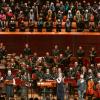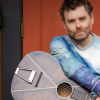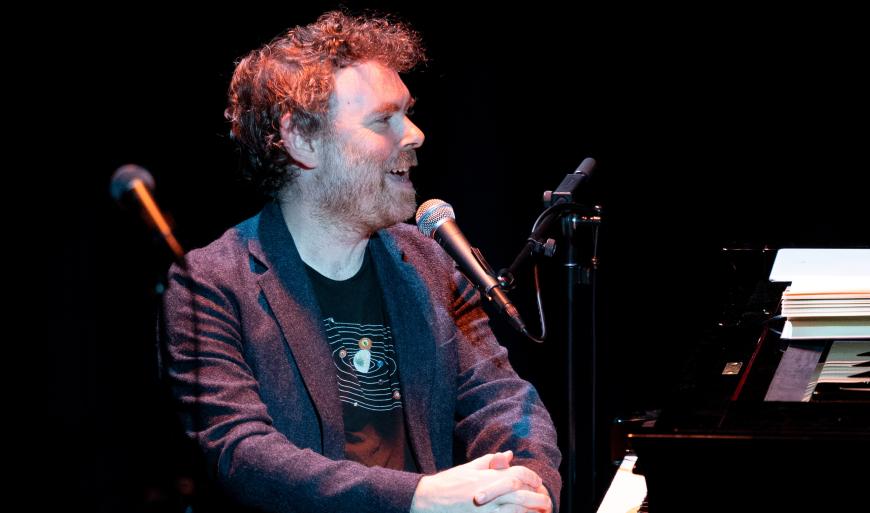
It’s a well-worn thesis that the internet might not always be so good for us — for our mental health, attention spans, or sense of social norms. Social media platforms prioritize outrage and attention-seeking behavior. They intensify feelings of isolation and promote the development of parasocial attachments.
Shows that take on the toxicity of the internet, then, carry a heavy burden. They must plumb nuances, get detailed, expose new angles of this established online discontent. Gabriel Kahane and the Attacca Quartet may not have all the answers for our collective digital malaise, but on Sunday night at the newly reopened Nimoy Theater, they offered a heartfelt meditation for UCLA’s Center for the Art of Performance.
Not many of us have — as Kahane did at the beginning of the COVID-19 pandemic — taken a year entirely away from the internet. But through this concert, which included selections from his popular albums (Craigslistlieder, Book of Travelers, and 2022’s Magnificent Bird), the composer and singer-songwriter has channeled that experience into a compelling musical narrative. Kahane paints a detailed portrait of digital disillusionment, analog living, and pandemic isolation.
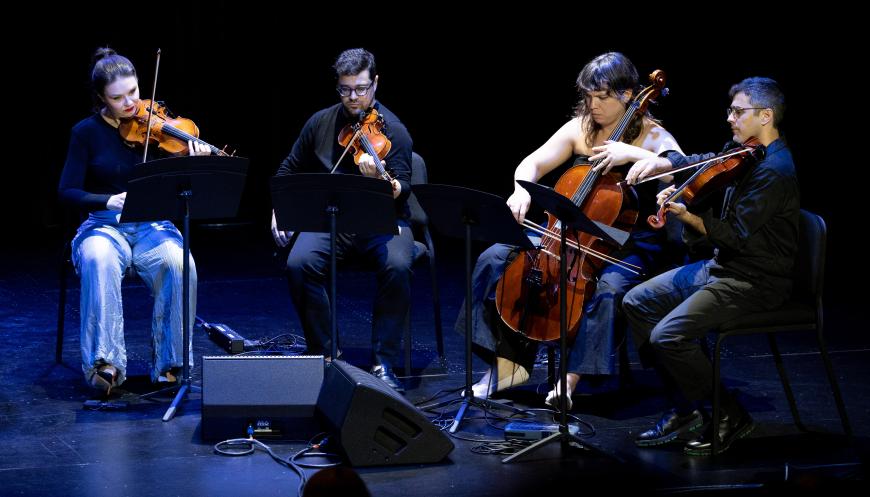
His musical dexterity is enviable, but that should come as no surprise — there are few artists who can work, as Kahane did on Magnificent Bird, with both contemporary classical cellist Gabriel Cabezas and American pop duo Sylvan Esso. The evening’s selected Craigslistlieder channeled George Gershwin, Dmitri Shostakovich, and Stephen Sondheim to underscore the most humorous lines of Kahane’s settings, while the album selections betrayed a deep familiarity with various pop songwriting and art-music traditions.
His arrangements for the Attacca Quartet, too, were evidence of his range and brightened many of the program’s selections. Violinists Amy Schroeder and Domenic Salerni shone in the contrapuntal interludes of “October 9th.” The language of Kahane’s ballads is focused largely on harmony over rhythm, but some of the evening’s most memorable numbers (like “Analog Living”) were enlivened by quietly textural quartet writing, full of ricochets, passed pizzicato, and gestural glissandos. Several selections featured impassioned solos for cellist Andrew Yee, whose renditions contributed needed heat.
And there were beautiful moments of musical interaction between Kahane, a formidable guitarist and pianist, and the Quartet. The strings’ bell tones, anchored by violist Nathan Schram’s quiet core and confident countermelodic interjections, rang out beautifully under Kahane’s looper-assisted guitar on “October 10th” and his soaring falsetto on “Baedeker.” Any disjunctions between Kahane’s phrasing or timing and the Quartet’s in the evening’s opening numbers were quickly forgotten (the Quartet, in its first live performance with Kahane, was set far from the piano on The Nimoy’s wide, shallow stage).
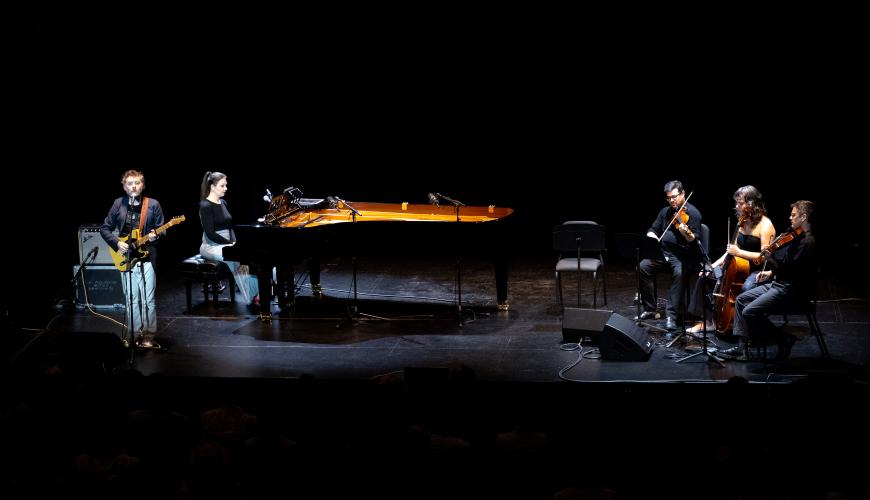
Just as crucial to the program’s coherence was Kahane’s skill and intuition as an emcee. Reading the audience’s energy keenly, he dipped alternately into comedic and poetic registers while sketching a chronological narrative peppered with improvised asides. Only occasionally did his interjections feel disproportionate as he sought to establish that connection. Early-show energy lengthened Kahane’s first few turns at the mic and shortened others (the Attacca Quartet received only a brief onstage introduction). And at the evening’s end, more time could have been spared to deepen his musings on returning to both digital and post-lockdown life.
But for a show so deeply concerned with the experience of both physical and digital isolation, it was clearly important to Kahane to strive for a relationship with his audience that felt maximally social. And in that, he succeeded — as the audience streamed into the lobby bar for a postconcert reception with the performers, many concertgoers seemed eager to continue the conversation.


